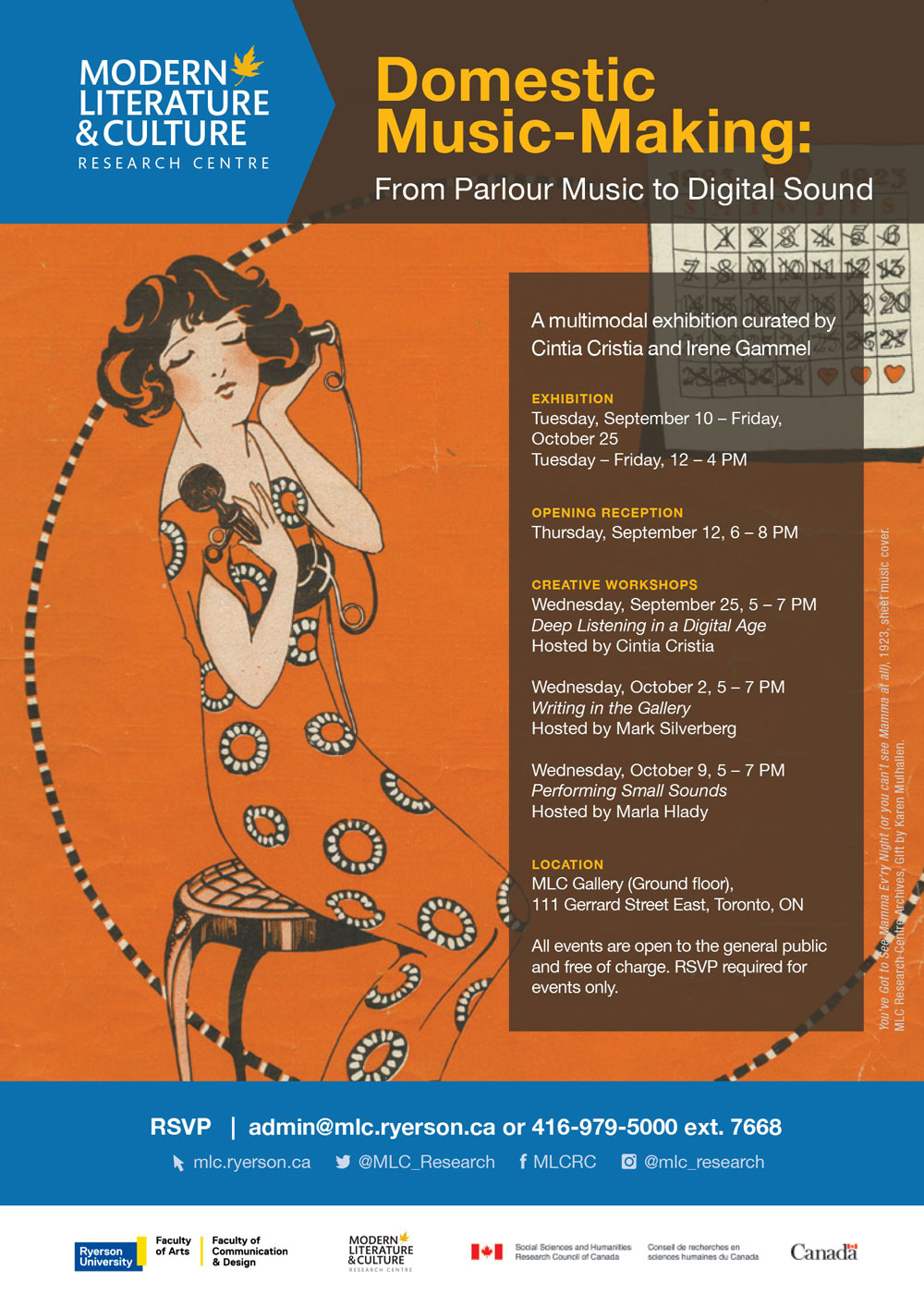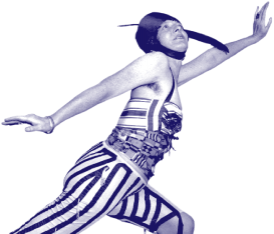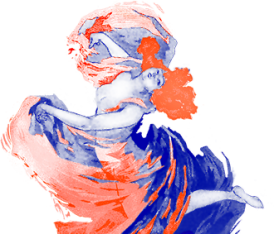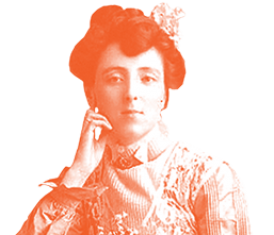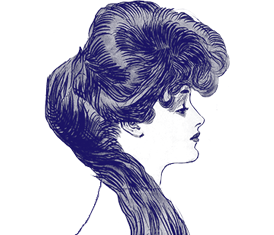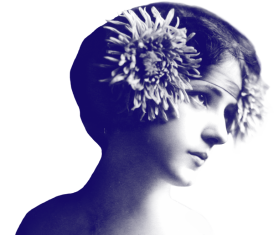A multimodal exhibition curated by Cintia Cristia and Irene Gammel
In 1923, Billy Rose and Con Conrad composed the song, “You’ve Got to See Mamma Ev’ry Night (or you can’t see Mamma at all).” One of its verses reads: “I don’t want the kind of man/ Who works on the instalment plan,/ You’ve got to see mamma ev’ry night/ Or you can’t see mamma at all.” As the verse’s light-heartedness suggests, the song belongs to the genre of parlour music wildly popular in the nineteenth and early twentieth centuries and intended primarily for female amateurs playing and singing at home. The music, lyrics, and especially the colourful cover designs of the music sheets convey societal expectations for women by portraying them in domestic roles as mothers, wives, and home-makers who find a compensatory space in domestic music making.
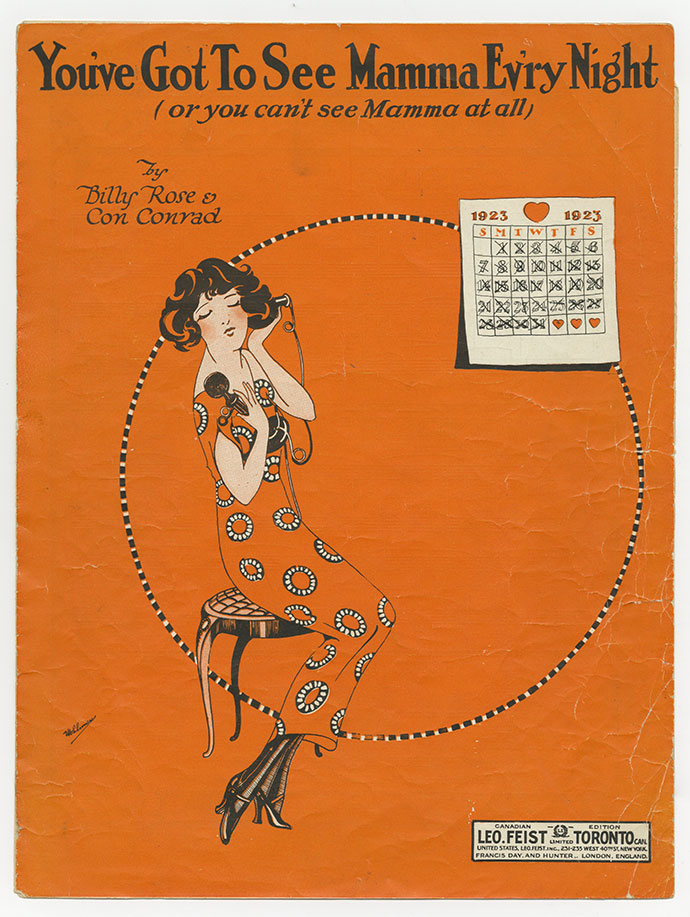
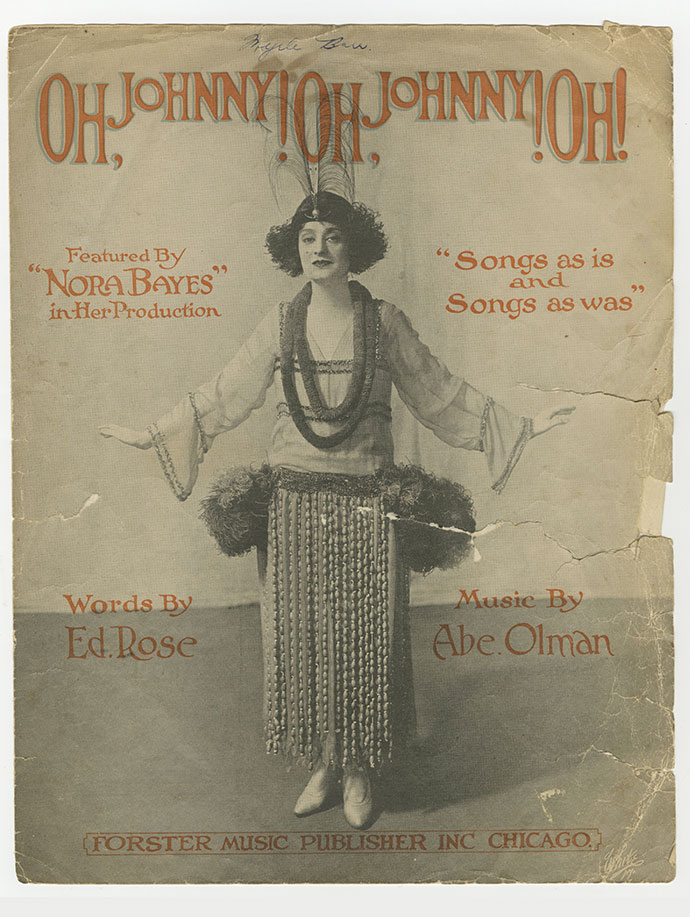
Left: Billy Rose and Con Conrad (lyrics and music), Wohlman (engraver). You’ve Got to See Mamma Ev’ry Night (or you can’t see Mamma at all), 1923. Sheet music. 30.5 cm x 23 cm. Toronto: Leo Feist. Modern Literature and Culture Research Centre Archives.
Right: Ed Rose (lyrics), Abe Olman (music). Oh, Johnny! Oh, Johnny! Oh!, 1917. Sheet music. 34 cm x 26.5 cm. Chicago: Forster Music. Modern Literature and Culture Research Centre Archives.
Produced a century later, the drawings and sound sculptures by contemporary Toronto sound artist Marla Hlady revisit this intersection of music, gender and domesticity in parlour music through experiments in digital sound. While Hlady’s drawings give visual expression to the complex process of listening, producing what the artist herself describes as “expressive tracings,” the artist’s stainless steel and wooden sculptures share the sheet music’s double role as domestic objects and potential music-making artifacts: when manipulated, they play digital sound works based on field recordings. As windows to the outer world, Hlady’s sound sculptures provide connections to memory and the imagination, and offer a contemporary perspective on women and domestic music-making in the digital age.
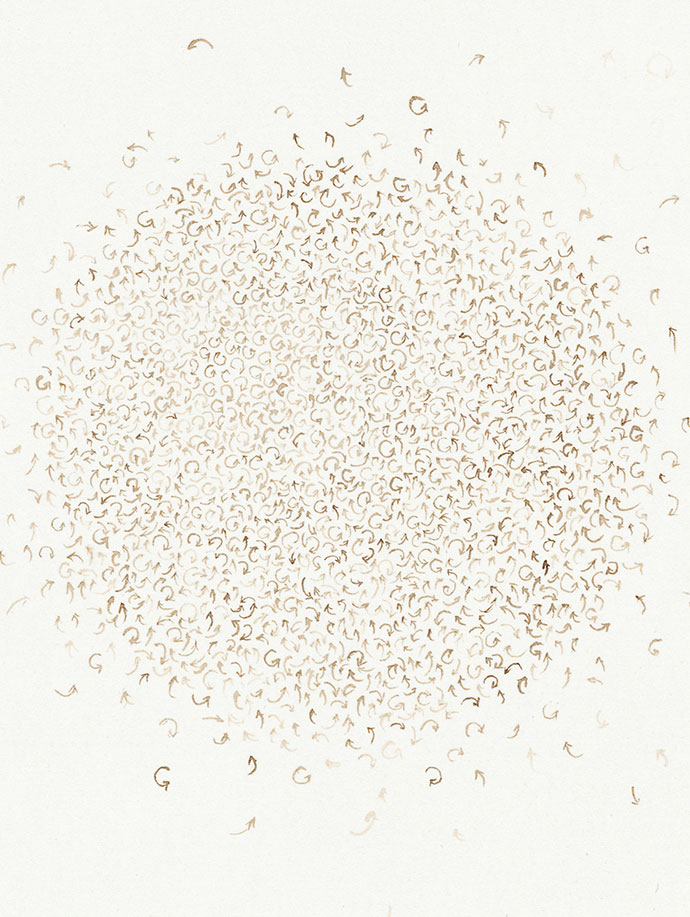
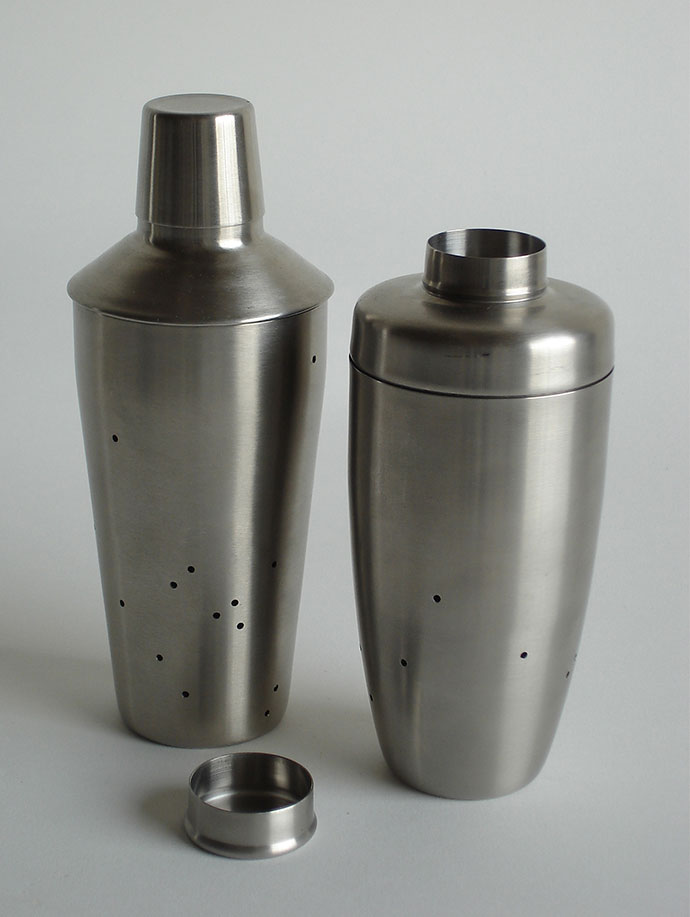
Left: Marla Hlady. Proposition for tracing a sound (Rupture #3) [detail], 2006. Ruptures Series. Ink on paper. 56.9 cm x 76.2 cm. Collection of the artist.
Right: Marla Hlady. Mixers (2), 2005-2007. Stainless steel cocktail shakers, audio components, LED lights, batteries. 22.86 cm x 11.43 cm; 19.7 cm x 11.43 cm. Collection of the artist.
This intersection of music, gender, and domesticity is at the center of Domestic Music-Making: From Parlour Music to Digital Sound, an exhibition curated by Cintia Cristia, an assistant professor in the RTA School of Media, and Irene Gammel, director of Ryerson’s Modern Literature and Culture Research Centre. Showcasing early twentieth century sheet music from the MLC archive holdings alongside Marla Hlady’s drawings and sound sculptures, the exhibition invites viewers to a multimodal experience. The sheet music displayed in this exhibition is from the archival holdings of the MLC Research Centre, a gift by Dr. Karen Mulhallen.
Photos
See the opening reception photo gallery
Poster
Exhibition
Tuesday, September 10 – Friday, October 25
Tuesday – Friday, 12 – 4 PM
MLC Gallery, 111 Gerrard Street East
Free of charge and open to the general public
Opening Reception
With artist’s and curators’ remarks and refreshments
Thursday, September 12, 6 – 8 PM
MLC Gallery, 111 Gerrard Street East
Free of charge and open to the general public
Creative Workshops
Wednesday, September 25, 5 – 7 PM
Deep Listening in a Digital Age
Hosted by Cintia Cristia
Wednesday, October 2, 5 – 7 PM
Writing in the Gallery
Hosted by Mark Silverberg
Wednesday, October 9, 5 – 7 PM
Performing Small Sounds
Hosted by Marla Hlady
MLC Gallery, 111 Gerrard Street East
Free of charge and open to the general public
Limited Seats. To RSVP, please contact: admin@mlc.ryerson.ca
All events are open to the general public and free of charge. RSVP required for events only.
For more information regarding the exhibition, to become a docent, or for booking interviews with the curators or the artist, please contact:
Cameron MacDonald
admin@mlc.ryerson.ca
416-979-5000 ext. 7668
Organized by: The Modern Literature and Culture Research Centre




